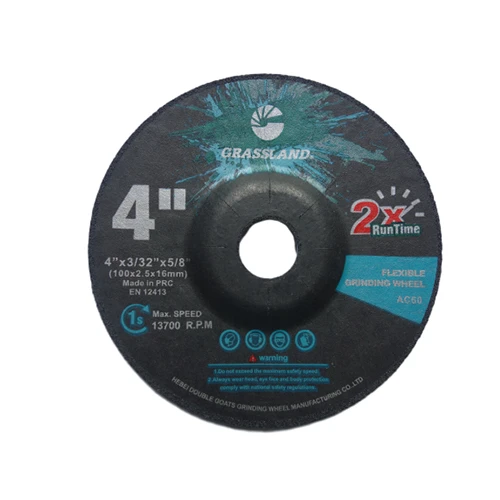Maximizing Efficiency The Importance of Angle Grinder Metal Cutting Discs
Angle grinders are a staple tool in the toolkit of both professional craftsmen and DIY enthusiasts. Defined by their versatility, these powerful handheld machines can handle a variety of tasks, from grinding and polishing to cutting metal. However, one of the most crucial components that determines the efficacy of an angle grinder during metalworking tasks is the cutting disc. In this article, we will explore the features, types, and best practices associated with metal cutting discs for angle grinders.
Understanding Metal Cutting Discs
Metal cutting discs are specially designed abrasive wheels attached to angle grinders to facilitate the cutting of various types of metal. These discs vary significantly in terms of composition, thickness, and application. Typically made from aluminum oxide or silicon carbide, metal cutting discs are engineered to withstand high speeds and resist wear, giving them the durability needed for rigorous metalworking tasks. The disc's thickness often ranges between 1 mm to 3 mm, affecting not only the cutting speed but also the type of materials that can be effectively cut.
Choosing the Right Disc
Selecting the appropriate disc for your angle grinder is crucial for achieving the best results. The thickness of the disc plays a decisive role in its cutting capability. Thinner discs (1-1.6 mm) are ideal for making precise cuts in metal sheets, while thicker discs (2-3 mm) are suitable for cutting through thicker materials and provide increased durability. It is also vital to choose a disc that matches the intended application. For instance, a high-speed cutting disc is designed specifically for quicker cuts in mild steel, whereas a stainless steel cutting disc is optimized to produce clean, burr-free edges in more delicate metals.
In addition to thickness and material, you should also consider the disc’s arbor size. Most angle grinders have a standard arbor size, so ensuring that your cutting disc matches this specification is essential for safe operation.
Best Practices for Using Cutting Discs
angle grinder metal cutting disc

To maximize the efficiency of your angle grinder and achieve optimal results, familiarizing yourself with best practices is essential
.1. Safety First Always wear appropriate personal protective equipment (PPE), including safety goggles, gloves, and ear protection. Metal shavings can be sharp, and sparks produced during cutting can be hazardous.
2. Proper Setup Ensure that your angle grinder is well-maintained and that the disc is installed securely. Incorrect installation can lead to disc breakage and severe injuries.
3. Correct Technique When cutting, hold the grinder with both hands for better control. Maintain a steady, moderate pressure while allowing the tool to do the work. Forcing the grinder can cause excessive wear on the disc and can lead to a dangerous kickback.
4. Lubrication and Cooling For longer cutting sessions, periodic stopping to allow both the disc and the material to cool can enhance overall performance and prolong the lifespan of the disc.
5. Clean Up After finishing your project, always clean the work area. Metal shavings and sparks can create unsafe conditions if left unattended.
Conclusion
Angle grinder metal cutting discs are indispensable tools for anyone involved in metalworking. By understanding the various types of cutting discs available and adhering to best practices during use, you can enhance your efficiency and safety while working with this powerful tool. Whether you’re a seasoned professional or a weekend DIY warrior, the right cutting disc can make all the difference in achieving clean, precise cuts with your angle grinder. Remember the right tool for the right job is key to success in metalworking projects.
Post time:Dec - 11 - 2024

















